#calculate your carbon footprint
Text
Air Chathams' carbon offset journey with TTI and CarbonClick

Integrated voluntary flight offsetting
About Air Chathams
Proudly New Zealand-owned and operated. Flying over the skies of New Zealand, Australia, and the South Pacific, including Whakatāne, Kāpiti Coast, Whanganui, Wellington, Christchurch, Chatham Islands and Norfolk Island. Air Chathams was founded with a simple objective: to offer aviation solutions for a remote, isolated island community so they could further develop into the thriving economy we see today. They are a customer-focused and solution-orientated airline, who thrive on being innovative problem solvers, that deliver safe, efficient, and sustainable outcomes for the many communities throughout Aotearoa and the Pacific that they serve.
About TTI (Travel Technology Interactive)
Travel Technology Interactive is an international and leading technology company listed on EURONEXT Growth in Paris, has been an AMADEUS IT GROUP worldwide business partner since 2005, and has also been recognized as an IATA Simplifying the Business (StB) Preferred Partner since 2006. TTI provides seamless cloudification for end-to-end Passenger Service Systems (PSS) and Cargo Management Systems (CMS) for the transportation industry. Headquartered in France, TTI offices are located worldwide: in Brazil, Singapore, and Panama.
The challenge
Air Chathams set out on a mission to shrink their carbon footprint across all facets of their operations. They were eager to involve their customers in this quest and aimed to have 30% of passengers choosing to offset their carbon emissions when booking flights by May 2025.
To reach this ambitious target, they needed a solution that seamlessly integrated into their booking system, which is managed by Passenger Service System (PSS) provider Travel Technology Interactive (TTI). Close collaboration among Air Chathams, TTI, and CarbonClick was essential to create a simple, user-friendly, and integrated solution.
The solution
CarbonClick and TTI joined forces to pioneer the very first end-to-end carbon offset Internet Booking Engine (IBE) solution that is fully integrated into a single PSS. Working closely with Air Chathams, CarbonClick ensured the service's visual and tonal alignment with their booking process, as an integral part of ancillary offerings.
When booking a flight, passengers now have the option to calculate their carbon footprint and learn how their decision to offset emissions contributes to making a positive impact on the planet and society. Every contribution is directly and instantly traceable to the climate projects it supports, providing passengers with a clear and immediate understanding of their positive impact.
The cost of the offset is displayed as a separate line item in the total booking cost.
The outcome
Traditionally, the extensive time and expense required for such an integrated solution deterred many airlines from implementing similar programmes. As a result, only a handful of global carriers have adopted end-to-end integrated initiatives to date.
The partnership between TTI and CarbonClick empowers all of TTI's airline clients to seamlessly implement the solution and incorporate it into their passenger booking systems in just a matter of days. Air Chathams proudly became the first TTI customer to adopt this innovative carbon offset solution.
Air Chathams customers not only can easily add the carbon offset ancillary when booking online, but TTI and CarbonClick ensured that their reservations team were able to easily add the carbon offset to their customers bookings over the phone or email too, via the backend of TTI. This was an important element for Air Chathams as their customers highly value the ability to talk to a real-life person to make a reservation.
Why Air Chathams chose to work with CarbonClick
“CarbonClick’s project range and quality appealed to us. They could offer us a local project to include into our mix, and their rigorous selection methodology assured us of the quality of the projects. With Air Chathams being the first TTI airline to integrate the solution into our booking system, we found CarbonClick to be very flexible to accommodate our needs and requirements. Another benefit was that CarbonClick provided us with a templated supporting webpage which we could set up within minutes. This webpage helps tell our sustainability story and engage our customers in offsetting at any stage. We are also related to CarbonClick due to being a fellow New Zealand business.” Estelle Bray-Taylor, Marketing and Communications Advisor, Air Chathams
“At Air Chathams we recognise our role within aviation to mitigate our climate footprint internally and in the communities, we do business with, for the long-term. That is why partnering with CarbonClick enables us to deliver simple and transparent carbon offsetting options for our customers. New Zealanders of all ages are aware of climate change and its adverse effects. So, collaborating and working with CarbonClick empowers the Airline to offer verified off-setting projects through our online booking system. It’s a simple and intuitive process to offset carbon emissions when purchasing flights through our website and follow the progression of meaningful and transparent carbon offsetting projects both home and abroad on CarbonClick’s digital platform. CarbonClick and Air Chathams share the same origins in Aotearoa and a joint ethos to effectively reduce greenhouse gas in the atmosphere and long may it this partnership continue.” Duane Emeny, Chief Operating Officer, Air Chathams
ORIGINALLY FOUND ON-
Source: CarbonClick(https://www.carbonclick.com/news-views/air-chathams-carbon-offset-journey-with-tti-and-carbonclick)

#carbon footprint calculator#carbon offsets#carbon offset#carbon offsetting#carbon calculator#calculate your carbon footprint#carbon footprint calculators#purchase carbon offsets#offset your carbon footprint
1 note
·
View note
Text
CarbonClick

CarbonClick enables businesses and their clientele to mitigate carbon emissions effectively through straightforward, impactful, and transparent carbon offsetting solutions. With CarbonClick, enterprises can enhance their sustainability endeavors and contribute positively to environmental conservation. Trusted by more than 1,100 brands worldwide, CarbonClick holds certification as a B Corp, ensuring adherence to rigorous criteria for social and environmental responsibility.
Visit Our Website
#carbon footprint calculator#carbon offsets#carbon offset#carbon offsetting#carbon calculator#calculate your carbon footprint#carbon footprint calculators#purchase carbon offsets
0 notes
Text
saw someone recommending an environmentalism app that will 'really help you make good choices and has lots of good info' and i was like hm. well maybe there's something new on there. im vaguely curious.
first thing it hits me in the face with is uwu take five minute showers
#i was hoping like 'if u have to purchase plastic this is the least harmful shit' not. this goddamn nonsense#if u ask me to calculate my carbon footprint im throwing u out the door#gigi.txt#this is not how it WORKS like on one hand i hate the ppl who are like uwuuwuwu well its the big corporATIONS ruining everything#and its like. i mean yeah. but your lifestyle will have to drastically change u realize that like the western hyperconsumerism that happens#will. need to change.#i mentioned to my sister once that u should wear each item of clothing 30 times and she laughed and was like 'thats so unreasonable'#'i could never do that for a lot of my clothes' okay stop fucking buying more then#but on the other hand the ppl who act like if everyone 'reduces their carbon footprint!!!' and 'takes shorter showers!!!' and shit like#thats not gonna fucking save us. are u joking.#im gonna go read some fucking naomi klein
3 notes
·
View notes
Text
Top Countries Leading the Race towards Net Zero
A Closer Look at their Sustainable Development Goals
05 August, 2023
WOCE Team
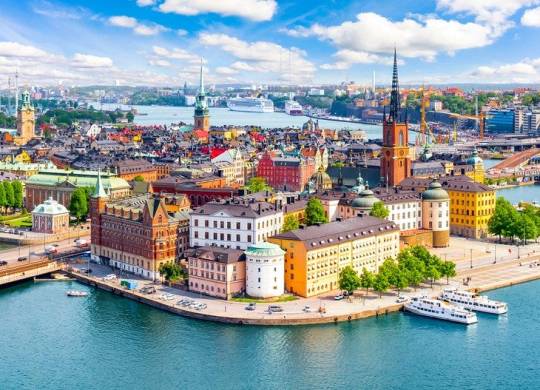
As the world grapples with the urgent need to combat climate change, several countries have emerged as leaders in the race towards achieving net zero emissions. These forward-thinking nations have not only set ambitious targets to reduce greenhouse gas emissions, but they have also incorporated sustainable development goals into their strategies. In this article, we will take a closer look at the top countries leading the charge towards a sustainable future and examine how they are aligning their efforts with the United Nations’ Sustainable Development Goals (SDGs). From innovative renewable energy projects to transformative policies.
Join us as we delve into the strategies and initiatives of these trailblazing countries, highlighting their commitment to not only mitigating climate change but also fostering social and economic progress. Discover how these nations are redefining what it means to achieve net zero emissions and how their sustainable development goals are shaping their journey towards a more sustainable future.
Why net zero emissions are important for the environment
Net zero emissions refer to the balance between the amount of greenhouse gases emitted into the atmosphere and the amount removed or offset. Achieving net zero emissions is crucial to combating climate change and its devastating effects on the environment. By reducing greenhouse gas emissions to net zero, we can stabilize the global temperature increase and prevent catastrophic consequences such as extreme weather events, rising sea levels, and loss of biodiversity.
The transition to net zero emissions requires a holistic approach that encompasses various sectors such as energy, transportation, agriculture, and industry. It involves implementing renewable energy sources, improving energy efficiency, adopting sustainable land-use practices, and promoting circular economies. By embracing these strategies, countries can not only mitigate climate change but also create green jobs, enhance energy security, and improve public health.
The role of sustainable development goals in achieving net zero emissions
The United Nations’ Sustainable Development Goals (SDGs) provide a comprehensive framework for countries to address the interconnected challenges of sustainable development, including climate change. The SDGs consist of 17 goals, each with specific targets to be achieved by 2030. These goals encompass a wide range of issues, including poverty eradication, gender equality, clean energy, sustainable cities, and climate action.
In the context of achieving net zero emissions, sustainable development goals play a crucial role. They provide countries with a roadmap to integrate climate action into their overall development strategies. By aligning their efforts with the SDGs, countries can ensure that their transition to net zero emissions is socially inclusive, economically viable, and environmentally sustainable.
Exploring the top 5 countries leading the race to net zero emissions
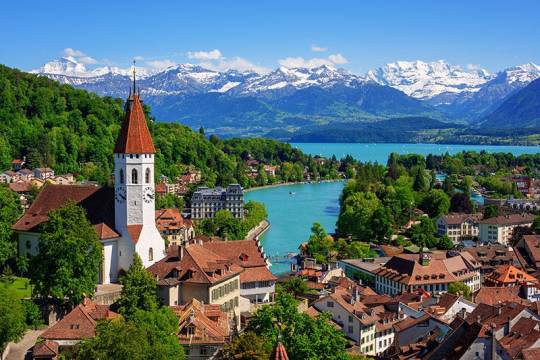
1. Sweden
Sweden has emerged as a global leader in the race towards net zero emissions. With a strong commitment to sustainable development, this country has set ambitious targets to reduce greenhouse gas emissions and transition to renewable energy sources. Their sustainable development goals include achieving universal access to clean energy, promoting sustainable agriculture, and building resilient infrastructure.
To achieve these goals, Sweden has implemented various initiatives and policies, including:
1. Heavy investments in renewable energy projects, such as wind and solar farms.
2. Implementation of energy efficiency measures across different sectors.
3. Adoption of carbon pricing mechanisms to incentivize emission reductions and promote low-carbon technologies.
These efforts have led to significant outcomes:
1. Reduction of greenhouse gas emissions.
2. Creation of new job opportunities.
3. Stimulated economic growth.
2. Norway
Norway is another frontrunner in the race towards net zero emissions. They have recognized the importance of sustainable development and have integrated it into their national policies and strategies. Their sustainable development goals include promoting sustainable cities and communities, ensuring access to affordable and clean energy, and taking urgent action to combat climate change.
To achieve these goals, Norway has implemented a range of initiatives, including:
1. Investment in public transportation systems to diminish vehicle emissions.
2. Encouragement of electric vehicle use through incentives and infrastructure development.
3. Implementation of energy efficiency programs in buildings and industries, resulting in reduced energy and greenhouse gas emissions.
4. Active participation in international collaborations to share best practices and expedite the transition to a low-carbon economy.
3. Denmark
Denmark has demonstrated a strong commitment to sustainable development and has made significant progress towards achieving net zero emissions. Their sustainable development goals encompass a wide range of areas, including affordable and clean energy, sustainable consumption and production, and climate action.
To achieve these goals, Denmark has implemented innovative policies and initiatives, which include:
Renewable Energy Projects:
1. Investment in large-scale solar and wind farms.
2. Implementation of energy efficiency measures within buildings and industries.
Sustainable Land-Use Practices:
1. Adoption of reforestation and afforestation to absorb carbon dioxide from the atmosphere.
Positive Outcomes:
1. Reduction of greenhouse gas emissions.
2. Enhancement of energy security.
3. Improvement of air quality.
4. Switzerland
Switzerland has emerged as a leader in sustainable development and has made significant strides towards achieving net zero emissions. Their sustainable development goals include promoting sustainable economic growth, ensuring access to affordable and clean energy, and taking urgent action to combat climate change.
To achieve these goals, Switzerland has implemented transformative policies and initiatives, including:
Investment in Renewable Energy:
1. Emphasis on renewable energy sources like solar and wind power.
2. Implementation of energy efficiency measures within buildings and industries.
Sustainable Transportation Systems:
1. Promotion of electric vehicles.
2. Development of efficient public transportation networks.
Positive Outcomes:
1. Reduction of greenhouse gas emissions.
2. Creation of new job opportunities.
3. Stimulation of economic growth.
5. Austria
Austria is at the forefront of the race towards net zero emissions. Their sustainable development goals encompass a wide range of areas, including affordable and clean energy, sustainable cities and communities, and climate action.
To achieve these goals, Austria has implemented bold initiatives and policies, which include:
Investment in Renewable Energy:
1. Heavy investment in renewable energy projects, including offshore wind farms and solar power installations
Energy Efficiency Measures:
1. Implementation of energy efficiency measures across various sectors
2. Reduction of energy consumption and greenhouse gas emissions
Sustainable Transportation Systems:
1. Promotion of electric vehicles
2. Development of cycling infrastructure
Positive Outcomes:
1. Reduction of greenhouse gas emissions
2. Improvement of air quality
3. Enhancement of the quality of life for citizens
Key takeaways and lessons from the top country’s efforts
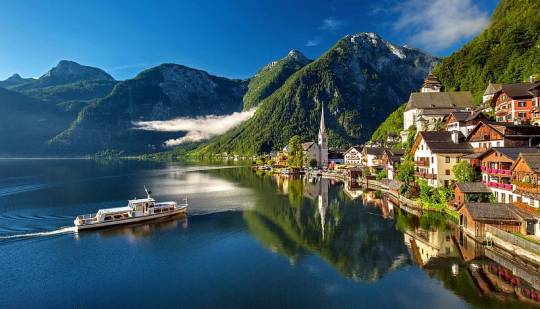
The efforts of the top countries leading the race to net zero emissions provide valuable lessons and insights for the global community. Firstly, their commitment to sustainable development goals has been instrumental in driving their transition to a low-carbon economy. By integrating climate action into their overall development strategies, these countries have ensured that their efforts are comprehensive and sustainable.
Secondly, international collaboration has played a crucial role in accelerating the transition to net zero emissions. The exchange of knowledge, best practices, and technologies has enabled countries to learn from each other and implement effective strategies. It is essential for countries to collaborate and support each other in achieving their sustainable development goals and mitigating climate change.
Lastly, the top countries’ efforts have demonstrated that achieving net zero emissions is not only crucial for the environment but also beneficial for social and economic progress. The transition to a low-carbon economy has created new job opportunities, enhanced energy security, and improved public health. It is a win-win situation that enables countries to address climate change while fostering sustainable development.
The importance of international collaboration for achieving net zero emissions
The transition to net zero emissions requires global cooperation and collaboration. No single country can achieve this goal alone. It is crucial for countries to work together, share knowledge and resources, and support each other in their efforts to mitigate climate change.
International collaboration can take various forms, including sharing best practices, technology transfer, financial support, and capacity building. By collaborating, countries can accelerate the transition to a low-carbon economy and achieve their sustainable development goals more effectively.
Furthermore, international collaboration can foster innovation and drive the development of new technologies and solutions. By pooling resources and expertise, countries can overcome common challenges and find innovative solutions to mitigate climate change.
Conclusion: The future of net zero emissions and sustainable development goals
The top countries leading the race to net zero emissions have shown that achieving this goal is not only possible but also beneficial for social, economic, and environmental progress. Their efforts to align with the United Nations’ Sustainable Development Goals have ensured that their transition to a low-carbon economy is holistic and inclusive.
As the world faces the urgent need to combat climate change, it is crucial for more countries to follow in the footsteps of these trailblazing nations. By setting ambitious targets, implementing transformative policies, and collaborating internationally, countries can pave the way for a greener and more sustainable future.
The journey towards net zero emissions and the achievement of sustainable development goals requires collective action and a commitment to long-term change. By working together, countries can create a world where economic prosperity and environmental sustainability go hand in hand. It is up to us to make the necessary changes and build a better future for generations to come.
#10 simple ways to reduce your carbon footprint#co2 emissions#carbon footprint calculation#carbon footprint#carbon credit price today in india#sustainability reporting#net zero emissions
0 notes
Text
"Calculate your carbon footprint and use your yard to undo the damage you do ^_^" the term carbon footprint was invented by fossil fuel companies to shift the blame of climate change and environmental destruction from them onto people just trying to survive, stop falling for their propaganda
1K notes
·
View notes
Text

photoelectric-Your neighbor is going solar! You should too!
#photoelectric-Your neighbor is going solar! You should too! solar proposal#solar epc#carbon footprint calculator#photoelectric https://www.photoelectric.in/user-offer.php
0 notes
Text
Related to that last post, I find people apply a kind of mathematical “proof by example” logic to veganism. Their interpretation of vegan is “any animal product is worse than any plant product across all metrics at all times” and then if they can find some kind of outlier exception to that statement, it nullifies the entire premise.
What’s problematic about this in context of veganism and a lot of other justice movements is that instead of being able to give people clear guidelines, proponents of this line of thinking are indirectly advocating for everyone to be doing a huge amount of research and work that they’re not going to do. Basically, if you go vegan, your carbon footprint will be lower in 99% of cases, but of course on the fringes you can find weird exceptions. But what’s the alternative? Do deep supply chain investigations on every intended purchase, calculate the carbon footprint of all your options, consult with multiple methods of valuing sustainability, and then, after all that, making an informed choice? Sure, that sounds great, but people aren’t gonna do that, and clear guidelines like “avoid animal products” will get you 99% of the way there. We just cannot be making it this complicated for people. Climate scientists are saying things like “eat a plant based diet” and “avoid flying” for a reason. These are clear, unambiguous directives that are easy to follow and will reduce your climate impact.
Infusing these directives with a ton of complexity is going to overwhelm people and make them check out. It’s the exact playbook of the fossil fuel companies who pushed “the science is complicated” as their primary line for decades and it’s STILL what my conservative relatives who don’t believe in climate change tell me. “Oh, some papers aren’t in agreement, so how can we really know?” “They keep changing their story!” etc.
28 notes
·
View notes
Text

i just saw (reblogged by a celebrity blog whom i generally admire) a truly asinine "infographic" about how it might make us queasy but killing an oil exec would totally make an orders of magnitude larger negative carbon footprint than planting trees or whatever meticulously calculated from some bullshit numbers plucked fresh from their ass, and it puts me in mind of nothing quite so much as this little nugget of black comedy gold from the nincompoops over at huffpost in 2016. "uhhh sorry but the numbers dont lie, i used the microsoft excel calculator functions meaning this is basically a rock solid mathematical theorem shone into my brain directly by the stars up in platos heaven, ill admit smth in me rebels against the more repellent aspects [viz., respectively: adventurist assassinations, and tolerating the thought of hillary clinton in the oval office] of my political fantasies being 1000% vindicated here but The Numbers Don't Lie"
id mind it less if they just did not put on this song and dance about how reluctant they are to embrace the shocking conclusion of the ironclad logically impeccable argument. its tiresome in the same way as so much TF smut: we all know youre into it, if youre not going to give it the veneer of any actual realism or plausibility can you at least cut with the act that youre being dragged into the end state against your will?
#see also:#'donating to my weird techie friends to futz around with probability theory has a 2% of saving 10^123456 sentient beings#so just going by the coldhard numbers spreading money around my social circle is obviously more expected value than giving to givedirectly'
62 notes
·
View notes
Text
How to lose 50 pounds in 16 months without really trying
note: this isn't a weight loss guide it's a poem about my experience with a weird phenomenon affecting my body.
Eat whatever you find in the cupboard at your parents house.
A handful of crackers, a peanut butter sandwich, an egg toastie, muesli for breakfast. switch from soy milk to oat milk about eight months in when your mum realises how much better the carbon footprint on it is. A whole pack of toffee pops in one night, a block of chocolate over two days, the occasional ben and jerries dairy free ice cream because despite the last two entries you are actually lactose intolerant. No fruit, you're allergic. Vegetables when your parents provide them (not that often). Mostly beige food.
Do between one and 2 thousand steps a day, on average. Probably. Only bother checking your steps 10 months in when your new meds give you heart palpitations and you start wearing a smart watch to make sure your heart hasn't always been that fast.
Sometimes walk between 5-8 thousand steps. Regret it for 1-3 days, lying in bed wracked with physical exhaustion that makes it hard for you to move.
Get a dog. Walk her 3 days a week. She could use more, but see the previous stanza if you want an excuse for my laziness.
Have a semi regular conversation with your parents that goes "have you lost weight?" "You say that any time I look happy" "Well you look better, anyway"
Ask your dad if you can borrow his belt, the jeans you ordered to your custom measurements are falling down.
Dig the pair of jeans from before those ones out of your drawer. Finally you're justified in keeping the jeans you grew out of.
Buy a new pair of jeans another size down (those are slightly baggy now too)
Finally weigh yourself, and think at first the scales are broken. There's no way you've lost 15 kilograms since moving home. You normally only weigh yourself at the doctors, on their orders.
Out of curiosity, weigh yourself again a few months later. Another 5 down. What the fuck. Calculate what percentage of your body weight that was (17%).
Think about the rheumatologist who told you losing even 5% of your body weight would help with your pain. Laugh through the pain (it's worse than ever).
Do research. Listen to a podcast about the science of weight loss, disproving scams and exposing diets as breeding grounds for unhealthy, disordered eating. Listen as they explain that your metabolism will fight very hard to stop you losing weight, adjusting even if you're doing it on purpose, so that you maintain your fat reserves. Read about how sustained weight loss is basically impossible (it's been a year at this point, and you're still steadily dropping).
Mention how much weight you've lost to your parents (wow!), your nurse (congratulations!) your doctor (wow you must have been big before! - hang on let me confirm this. Hm. I'll send you for some blood tests).
Your blood tests are fine, you must just be lucky.
Track your calorie intake for a couple of weeks. Maybe you're undereating (no). Google unexplained weight loss (cancer).
Go back six weeks later, you've lost at least another kilo. "Wow!" she says again. She's surprised and confused. You mention if it keeps up you might apply for a top surgery referral, because you know there's a BMI Limit. You never thought you'd qualify. She looks at her notes again and goes "... yeah" in a way that makes you think she's still wondering how this is happening.
You get more blood tests.
And wait for them to come back normal.
You're done being anxious about your health, you think while you walk the dogs. Fuck it.
then you think up this poem while you munch on a couple of gingernuts in the kitchen where the dog can't beg them off you.
Congratulations on the weight loss! You look great!
#my writing#poetry#chronic health#cw weight loss#cw diet talk#cw fatphobia#weight loss#unexplained weight loss
39 notes
·
View notes
Note
sorry about the angry vegans on your recent post. I completely agree that encouraging people to do something (ie eat less beef, etc), even if not the most they could possibly do, is a viable way to create change.
in several of my enviro courses so far, ive had to play with those carbon footprint calculators, and reducing one's red meat consumption is a really powerful way to lower your carbon footprint. it really doesn't have to be all or nothing.
we even talked about these mentalities in an enviro ethics class I took- promoting change can be really hard when it's pushed that way. taking steps a bit out of your comfort zone is a much more manageable and personally sustainable path toward a greener life. it can be easy for people to burn out and feel hopeless if they feel like the steps within their means aren't good enough.
i wish your point didn't get buried as much as it did. hope you're having a good day!
(you dont need to publish this publicly if you dont want to, of course! just wanted to show some support :P)
I think the "all or nothing" mentality is what makes people just go, fuck it, I don't care
Because it's a failed venture from the start. You can't not need to drive ever, at all. You can take shorter showers but you can't just not bathe. You're an animal, a heterotroph, that breathes out carbon dioxide.
Part of why I advocate for gardening and supporting local farmers and community gardens etc. is that getting your hands in the literal actual dirt of your community is what teaches you that you can create change, you CAN impact the world for the better.
Altering your consumption patterns sucks as a way of mitigating climate change because it makes you feel so helpless. Like you're just lost in this vast machine that you know nothing about. If I buy Eco-Friendly Brand instead of Regular Brand, what does it actually do? What if Eco-Friendly Brand is being shipped farther, even if the bottle has less plastic? Or what if it's packed in crates with a larger number of styrofoam packing peanuts, making the less-plastic bottle negligible? What if Eco-Friendly Brand is just lying to me?
It starts to seem like an illusion of choice, because you have no way of verifying that your choice matters.
And if you take shorter showers and use metal straws your entire life, you're not ever going to actually SEE what that "does" with your eyes. The reward chemicals never come. It's just something you have to believe is useful.
You gotta touch dirt, friends. You gotta see things grow.
238 notes
·
View notes
Text
CarbonClick appointed as the designated offsetting partner for the Singapore Airshow

Simplicity and accessibility is the key to encouraging consumers to offset and CarbonClick has partnered with the Singapore Airshow to empower attendees to offset the environmental impact of their travel to the show. Attendees can seamlessly navigate a user-friendly integrated process on the Singapore Airshow’s respective trade and public homepages to offset their flight emissions. This initiative not only allows participants to take direct action but also helps support the global mission to make a positive impact on climate change at every available point.
Through the platform, visitors can delve into their individual climate impact, gaining insights into their carbon footprint, and explore information about the impactful and high-quality projects they support through CarbonClick’s offsetting projects. One of the five chosen projects is the Rimba Raya Biodiversity Reserve (REDD+) project in Indonesia. Rimba Raya provides a buffer zone between the palm oil industry and the Tanjung Puting National Park, home to one of the last remaining wild populations of orangutans on earth - more information can be found on our website. CarbonClick's innovative approach ensures that offsetting becomes an integral part of the attendee experience, transforming each journey into an opportunity to make a real difference.
Set against the backdrop of aviation excellence, the Singapore Airshow is where industry leaders and enthusiasts converge. From February 20 to 25, 2024, the Changi Exhibition Centre will host this iconic event. CarbonClick is poised to make its mark by offering attendees a chance to join the movement towards a more sustainable future by offering its offsetting capabilities whilst research into reduction and removal is still being developed in the aviation industry.
About CarbonClick
CarbonClick helps businesses and individuals take meaningful climate action with simple and transparent carbon offsetting. CarbonClick’s platform enables businesses to tackle emissions that cannot yet be reduced, by empowering companies and individuals to offset carbon via highly vetted climate projects that align with UN Sustainable Development Goals. CarbonClick provides end-to-end transparency to both businesses and consumers, ensuring everyone engaged is able to see the direct impact of the offsetting. Headquartered in New Zealand, CarbonClick has achieved B Corp certification for its commitment to use business as a force for good, meeting and maintaining the highest standard of social and environmental impact.
ORIGINALLY FOUND ON-
Source: CarbonClick(https://www.carbonclick.com/news-views/carbonclick-appointed-as-the-designated-offsetting-partner-for-the-singapore-airshow)

#carbon footprint calculator#carbon offsets#carbon offset#carbon offsetting#carbon calculator#calculate your carbon footprint#carbon footprint calculators#purchase carbon offsets#offset your carbon footprint#carbon offset credit#personal carbon offsetting#airline carbon offset programs
1 note
·
View note
Text
Panicking about climate change? Consider subscribing to a carbon removal or offset service.
What with the heatwaves, the fires, and the billionaires on their private jets, I've been seeing more climate doomism on here than usual. I get it. Everything feels terrible. And it can be so frustrating to see stuff about personal carbon impact when you're already washing your laundry on cold cycles, biking to work, eating less meat, etc., and meanwhile the US Senate is killing energy initiatives.
But if you have climate anxiety, I HIGHLY recommend subscribing to a carbon-negative project. My carbon subscriptions help me sleep at night. They have been my antidote to feeling helpless.
Some quick math. In the US, there are 74.5 million Netflix subscribers. And in 2020, the US had CO2 emission averages of 14.2 tonnes annually per capita.
So, if every US American with a Netflix subscription took out a subscription that offset their emissions, that'd be 1.06 billion tonnes annually: over 3% of total global emissions (34b tonnes). And that's just if a subsection of the US population did this.
Obviously this is an oversimplification. Carbon offsets are admittedly more expensive than Netflix. Also, offsetting usually works by funding projects elsewhere to reduce global emissions, so it's overall less efficient than, I don't know, the US getting its shit together and funding public transit, which would cut emissions at the source.
But the point remains: collectivism does exist, and we CAN do something about the emissions that we're unavoidably responsible for.
Enter these services, all of which do carbon offsets that are effective, additional, verifiable, and permanent.
WREN. I subscribe to Wren. You pick a dollar amount per month, and they funnel it toward carbon offset projects worldwide. They offer a carbon calculator, personal suggestions for how to reduce your footprint, and are generally awesome. An example of their projects: in the last six months, they enabled 12 Indigenous communities in the Amazon to reduce local deforestation by a staggering 84%, preserving 180,000 acres.
CLIMEWORKS. Climeworks is more expensive per kg removed, but I subscribe to this one too and LOVE this project. It's direct capture, meaning their factories suck CO2 out of the air and sequester it in rock. I want this to scale SO, SO badly. Climeworks doesn't just prevent or reduce emissions—it's carbon NEGATIVE, which is massive. And it's fully permanent: once the Climeworks facilities sequester the carbon in rock, it's there forever (unlike, say, tree-planting, which relies on the lifespan and health of the tree). Climeworks, like Wren, is a no-minimum subscription. You could do a dollar a month.
ECOLOGI. Pretty similar to Wren, but with high emphasis on tree-planting! Ecologi is big on reforestation, and other recent projects include access to clean cookstoves and providing renewable fuel to farmers. They do tree-planting gifts that would be an awesome option around holiday time.
NORI. A carbon-removal marketplace that connects its users to farmers, who submit plans for carbon removal and storage! This one has more of a businessy bent to it, but you can outright buy a tonne of CO2 storage in a transactional way.
To finish off with some good news: the US has joined China and Europe in hitting the 5% tipping point for electric car adoption, the costs of renewable energy have cratered, and China is set to hit its emissions peak earlier than anticipated (huge for the world's largest emitter).
Hang in there.
please feel free to share this post!
#climate change#environmentalism#environment#climate crisis#long post#i will be reblogging this multiple times btw#me? not shutting up about climeworks? it's more likely than you think#seriously EVERYBODY I KNOW cares about the climate and is freaking out about climate change and yet#i don't know if ANY of my friends do this stuff which is so accessible and also REALLY screws your head on straight#re: climate change#it is good to feel partially (not totally!!) responsible - it encourages feelings of community and connectivity!!!!#it encourages action!!!!#i do not have a lot of money but every month this stuff feels like the best thing on my credit card statement.
295 notes
·
View notes
Text
10 Easy Ways to Reduce Your Carbon Footprint
Make a Positive Impact on Climate Change
10 August, 2023
WOCE Team
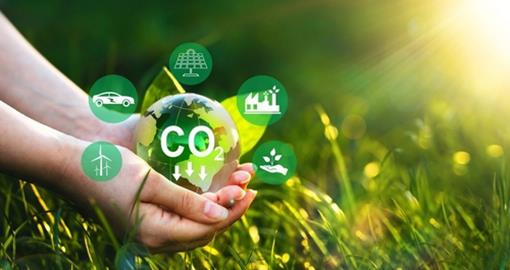
Are you looking for simple ways to combat climate change and reduce your carbon footprint? Look no further! In this article, we have compiled a list of 10 easy and effective strategies that you can implement in your daily life to make a positive impact on our planet.
With the growing concern over the environment, it's essential that we all take responsibility for our actions and make sustainable choices. From reducing energy consumption and embracing renewable energy sources to conserving water and practicing mindful consumption, there are numerous ways we can contribute to a greener future.
By incorporating these easy-to-follow tips into your routine, you'll not only be helping to combat climate change but also saving money and leading a healthier lifestyle. So, whether you're a seasoned environmentalist or just starting your eco-friendly journey, this article is filled with practical advice and actionable steps that anyone can take.
Start making a difference today by reducing your carbon footprint and creating positive change for the planet. Together, we can build a sustainable future for generations to come.
The Importance of Reducing Carbon Footprint
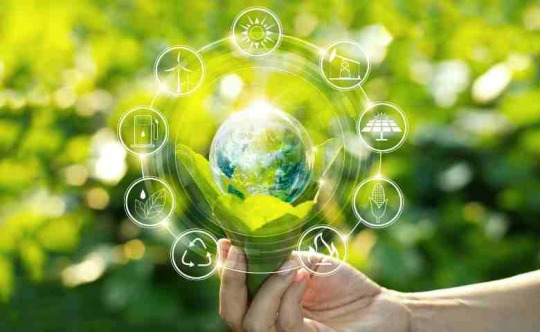
Reducing our carbon footprint is not only essential for the environment but also for our own well-being. By making sustainable choices, we can save money, improve air quality, and foster a healthier lifestyle. Additionally, taking action to reduce our carbon emissions sends a powerful message to policymakers and corporations, urging them to prioritize environmental sustainability.
Simple Lifestyle Changes to Reduce Carbon Footprint
1. Embrace a plant-based diet: The food industry is a significant contributor to greenhouse gas emissions. By reducing our consumption of meat and dairy products, we can significantly reduce our carbon footprint. Plant-based alternatives not only have a lower environmental impact but are also healthier for us.
2. Reduce, reuse, recycle: The mantra of waste management still holds true. By reducing the amount of waste we generate, reusing items whenever possible, and recycling materials, we can conserve resources and minimize the emissions associated with waste disposal.
3. Conserve energy at home: Simple actions like turning off lights when leaving a room, unplugging electronics when not in use, and using energy-efficient appliances can make a significant difference. Additionally, insulating your home and using natural lighting can help reduce energy consumption.
Energy-Efficient Practices at Home
4. Upgrade to LED lighting: LED bulbs are not only more energy-efficient but also last longer than traditional incandescent bulbs. By making this switch, you can save money on your energy bills and reduce your carbon footprint.
5. Optimize heating and cooling: Proper insulation, sealing gaps, and using programmable thermostats can help regulate indoor temperatures efficiently. Lowering the thermostat by just a few degrees during winter and raising it during summer can result in significant energy savings.
6. Use energy-efficient appliances: When purchasing new appliances, look for the Energy Star label. These appliances are designed to consume less energy without compromising performance.
Sustainable Transportation Options
7. Choose public transportation: Opting for public transportation, such as buses, trains, or trams, can significantly reduce your carbon emissions. If public transport is not accessible, carpooling or ride-sharing apps can be eco-friendly alternatives.
8. Walk or bike: For short distances, consider walking or biking instead of driving. Not only will you reduce your carbon footprint, but you'll also improve your health and fitness.
9. Invest in electric vehicles: If you're in the market for a new car, consider purchasing an electric vehicle (EV) or a hybrid. EVs produce zero tailpipe emissions and are becoming increasingly accessible and affordable.
Recycling and Waste Management
10. Follow proper recycling practices: Educate yourself on what can and cannot be recycled in your area. Rinse containers, separate recyclables, and dispose of hazardous waste responsibly. Remember, recycling is not a cure-all, so reducing and reusing should always be the first priority.
Conserving Water and Reducing Water Footprint
11. Fix leaks: A dripping faucet or a leaking pipe may seem insignificant, but they can waste hundreds of gallons of water every month. Regularly check for leaks and fix them promptly.
12. Install water-efficient fixtures: Install low-flow showerheads, faucets, and toilets to reduce water usage. These fixtures can significantly lower your water bills and conserve this precious resource.
Supporting Renewable Energy Sources
14. Switch to renewable energy: Consider installing solar panels on your property to generate clean, renewable energy. If that's not possible, explore options to purchase renewable energy from your utility provider.
15. Support renewable energy initiatives: Advocate for renewable energy policies and support organizations and businesses that prioritize clean energy. Encourage your local community to invest in wind, solar, and hydroelectric projects.
Advocating for Climate Action
16. Stay informed: Keep up-to-date with the latest climate change research and news. Educate yourself and engage in conversations about climate change with friends, family, and colleagues.
17. Vote for climate-conscious leaders: Support political candidates who prioritize climate change and have a history of advocating for environmental policies. Use your vote to influence climate action.
18. Join or support environmental organizations: Get involved with local environmental organizations and contribute your time, skills, or donations. These organizations play a crucial role in promoting sustainability and driving change.
13. Collect rainwater: Installing a rain barrel to collect rainwater can be used for watering plants or washing your car. This simple practice can help reduce strain on municipal water supplies.
Conclusion: Taking Action for a Sustainable Future
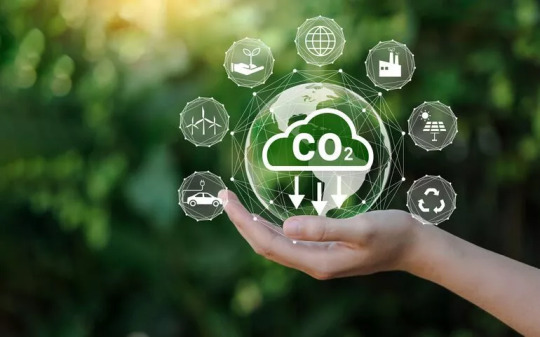
By implementing these 10 easy ways to reduce your carbon footprint, you can make a positive impact on climate change. Remember, every action counts, no matter how small. Whether it's adopting a plant-based diet, conserving energy at home, or supporting renewable energy sources, each step towards sustainability contributes to a brighter and greener future for all.
Start making a difference today and inspire others to join you on this crucial journey towards a sustainable future. Together, we can create a world where future generations can thrive in harmony with nature. Let's reduce our carbon footprint and make a positive impact on climate change!
#10 simple ways to reduce your carbon footprint#co2 emissions#carbon footprint calculation#carbon footprint#carbon credit price today in india#sustainability reporting#net zero emissions
0 notes
Text
5. Sustainability!
When I first found out we had no blog post prompt this week my immediate reaction was to panic. I am someone who absolutely loves structure and knowing the subject of the task I have to complete so being able to write about anything was something that kind of threw me for a loop. I ended up deciding that I wanted to talk about sustainability.
Sustainability has been something near and dear to my heart for honestly as long as I can remember. I credit a lot of that to my grandma, who instilled the importance of protecting and preserving our planet from a very young age. I remember her teaching me what could be recycled and how to clean things properly, as well as teaching me how composting was not only great for avoiding throwing food waste in the garbage, but also super helpful for gardening. I’ve also always found sorting and cleaning things quite relaxing which I will say also probably contributed to why I enjoyed it.
Fast forward into high school and I was really starting to get more interested in sustainability. I remember reading into the implications of anthropogenic change on habitat destruction and climate change and being really motivated to change my actions to help reduce this. I became really into avoiding single use items, like plastic bags, saran wrap, and straws, and replacing them with alternatives like beeswax wraps, reusable containers, and metal straws. It was such a simple change yet so gratifying. I was also lucky enough that I lived close enough to walk to and from school every day, avoiding using transportation which would contribute to my carbon footprint. I think the biggest change I made in high school was becoming mostly vegan ( with exceptions to bee products and fish which my family would catch). I also began to engage with sustainability on a political scale, attending a bunch of Fridays for futures! At this point I also really started to realize I had a passion for sharing sustainability with others and thinking of it in a career aspect.
Now fast forward to university. I’ve really made an effort to live my most sustainable life possible. I am vegan diet wise ( I still use bee products like beeswax wraps and lip balm which family friends that own an apiary make, shoutout Honey Pie Hives and Herbals in Prince Edward County). I avoid single use as much as possible. I use reusable containers, my straws, wraps, and reusable grocery/ produce bags all the time, and make an effort to shop at more sustainable stores to get food (mainly the farmers market as much as I can). I use public transport if I go anywhere, I can’t walk to. I also got a job where I can share sustainability with others! I am the RA-LLC for Eco House, which is an on-campus residence community dedicated for students who want to engage with sustainability and environmental related topics/ conversations. I get to help facilitate conversations about environmental and social issues and share knowledge and resources with students on how to engage with and live more sustainable lifestyles! I also volunteer for the sustainable residence committee, which is a committee for students living in residence to have conversations and share knowledge about sustainability with like-minded individuals, whilst planning and running iniatives relating to sustainability for residence students! I find both of these experiences to bring me a lot of joy, and to encourage me to continuously learn more and keep living this lifestyle.
I know I wrote a lot but its because I am genuinely so passionate about it. For those of you who might be interested in checking out your own carbon footprint, theres a really cool tool called carbon-calculator which can tell you, and let you know what you’re doing that’s really good and areas where you can approve! ( mine was 1.3 tons CO2e)
3 notes
·
View notes
Text

#Want to save on your electricity bill? Take a step toward solar renewable energy. solar proposal#solar epc#carbon footprint calculator#https://www.photoelectric.in/user-offer.php
0 notes
Text
have an essay about the environment, because i dont wanna waste this writing i did in english class
"The Environment" can mean a thousand things, and yet, when we hear it in the current age, all we can think of is the environment of nature, the wilderness, the place where we as a species came from.
How is The Environment doing currently? How do we treat our mother nature from which we all came? Do we live in harmony, taking ony as much as we need, and giving back as much, or do we greedily sprint forward grabbing everything we can just so we can have a little more?
Sadly, as we all know , the latter is the case. The rich march on with their bags of money, and we, the normal people are supposed to live where they had stomped. Is this right? Is this justified? Why can't we all just share what we have left and let our planet, the only environment we have access to, heal?
"Oh", you say, "we do let it heal, do you not know? Have you calculated your carbon footprint? Do you use paper straws? Have you considered switching to an EV?" And while these points are passable, they completely ignore the true cause and instead attempt to shift the blame upon the customer, the humble human.
The "carbon footprint", for example , was created by petrol companies to allow them to ignore their mistakes and instead throw it on the rest of humanity.
The paper straws, while hated by many, are a step in the right direction, with the destination being reusable straws, but many ignore the reason why the original was sucha problem, and that being our unsustainable way of getting rid of plastics.
And this all is ignoring the way that EV companies (specifically battery companies) abuse third world countries to mine lithium, and the damage these processes cause.
And so, I ask of you: Do you care for the environment? If no, continue on, if yes, ask yourself what the real problem is.
2 notes
·
View notes